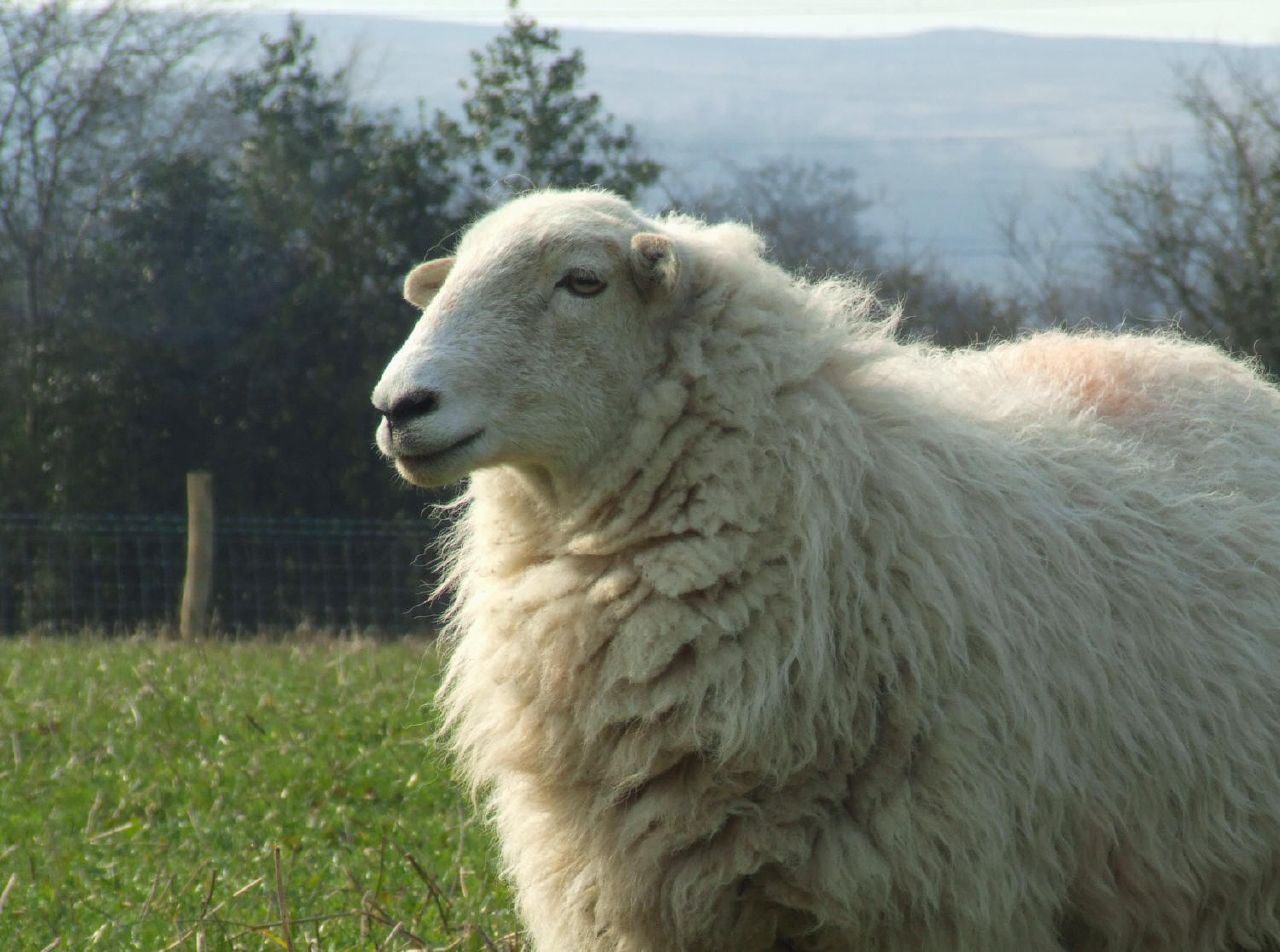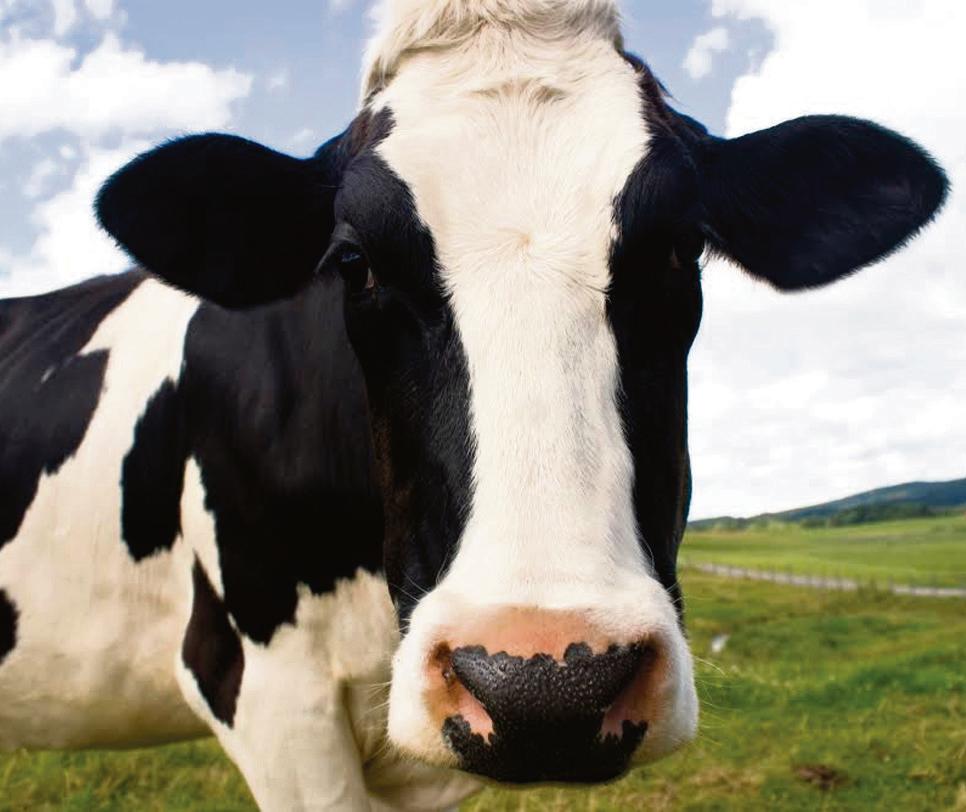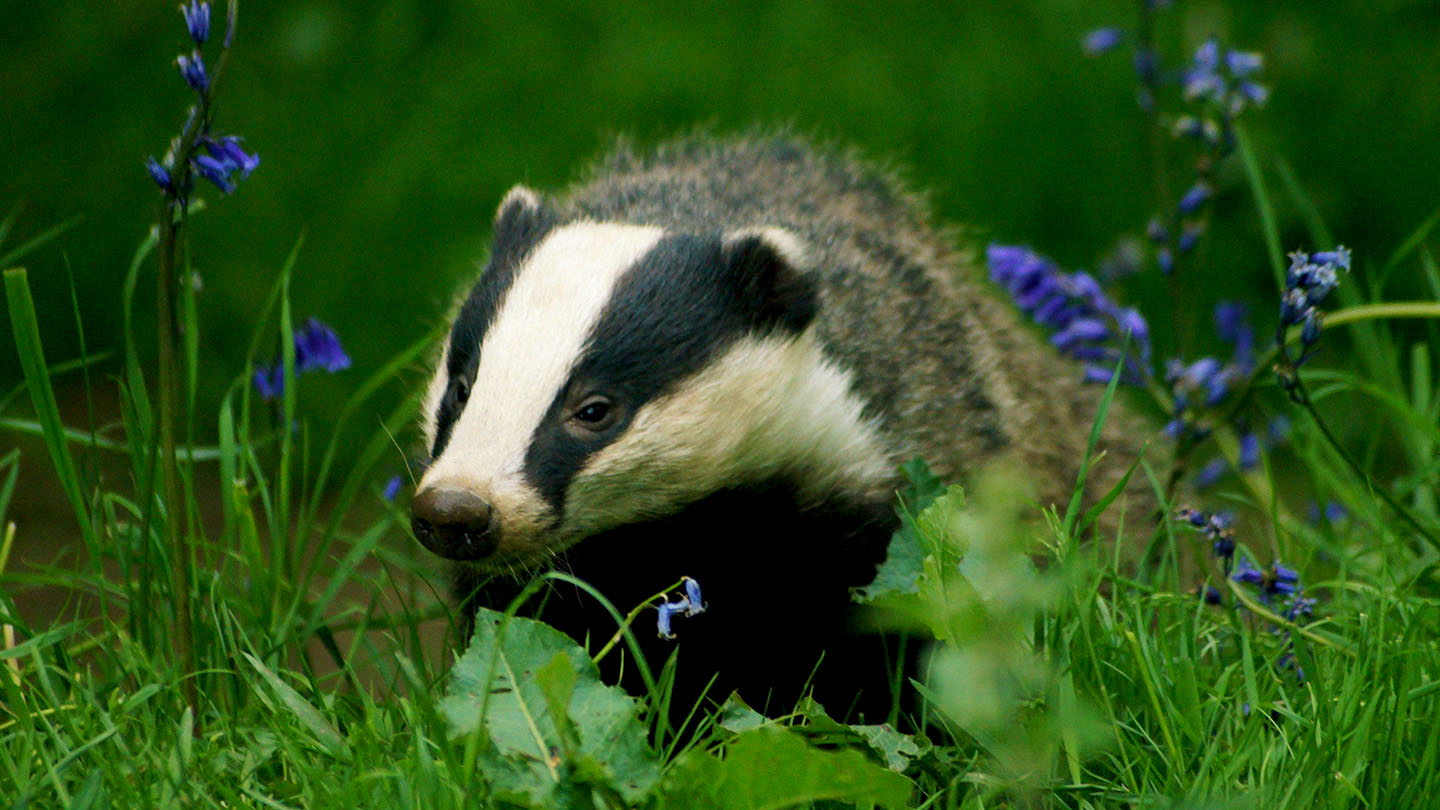Farming
New tastes from old traditions

THE NATIONAL SHEEP ASSOCIATION (NSA), working in partnership with others, is delighted to receive the additional funding to explore consumption opportunities for UK heritage sheep breeds connected to landscapes and specific products.
NSA Mutton Consultant Bob Kennard has put together the information below in conjunction with a survey designed to gather views on the proposals.
Consumption of sheep meat is in long-term decline, especially when compared to poultry consumption
The structure of the UK sheep industry has changed over the past 40 years from a predominantly traditional stratified system, towards a much more non-stratified one, where a few ‘general-purpose’ breeds are scattered in several ecological and altitude zones to directly produce finished lambs
Hill breed populations have declined quite dramatically over the past 40 years, as have other traditional UK Heritage breeds.
Whilst the pure-bred numbers have been in general decline, several cross-breds have been on the rise
A few breeds have seen dramatic increases in numbers, including the Texel and Lleyn
New breeds and composites are still appearing. This is a continuation of breeding innovation that has occurred for centuries. However, there is some concern in the industry about recent such developments, especially if the ownership of these genetics is held by breeding companies with contacts, skills, and finance, to establish marketing relationships with national supply chains and/or supermarkets. Experience of such developments in other livestock sectors is that it can have sudden and far reaching effects on reducing genetic variety.
The Dangers
These changes have been interpreted as increasing “efficiency”. However, there are dangers, two of which are particularly important.
A) The threat to the genetic viability of our native sheep breeds
The UK has over 60 native breeds of sheep, the highest in the world. The decline in the commercial use of traditional Heritage breeds of sheep threatens the priceless genepool which they give us. Who knows what genetic traits will be needed in future, especially with the effects of climate change? This national asset of genetic variability could disappear as populations of many breeds shrink to genetically non-viable levels. No sheep breed can rest on its laurels and resist moving with the times, but all breeds carry valuable traits that need recognition. Their future will be more secure if they succeed in the marketplace.
B) The threat to the landscape and communities of the uplands.
The decline of stratification has reflected a decline in traditional sheep farming systems, which have developed and maintained many landscapes over hundreds of years. The intensification and ‘increased efficiency’ of farming enterprises such as pigs, poultry and dairy have changed these sectors beyond recognition. Sheep farming, particularly in the uplands, remains the final bastion of traditional farming systems in the UK, based largely on family farms. However, unlike other farming sectors which are less landscape-based, the decline of traditional sheep farming has more far-reaching impacts. Not only are the cherished landscapes and other pastoral areas under threat, but also the communities which still largely rely on traditional sheep farming for their survival.
Industry Response
It is with this backdrop that the NSA, together with a number of industry bodies are developing a strategy to help address these problems. With a recent donation from the Prince’s Countryside Fund to add to industry donations, we are now able to proceed with a feasibility study to find a practical solution. The work, to be carried out over the next few months, will investigate whether a sustainable project to add value to UK Heritage sheep breed supply chains can be developed.
Diversifying the Sheep Meat Market
Industry-scale promotional and marketing efforts currently concentrate, understandably, largely on just one product, Standard Lamb. Meanwhile, sheep production has a gloriously diverse heritage.
It has been said that breed has little impact on sheep meat flavour, but this is only likely to be true of lamb where flavours have not had time to develop, as with veal. Increasing evidence is now demonstrating that with mutton there are definite differences in flavour between breeds. This would have been no surprise to Victorian Foodies.
The current sheep meat market could be compared to the wine market of the 1950s and 1960s, when there was only a small handful of widely available wines. This has now exploded into thousands. The same pattern can be seen for cheese, beer, bread and so on. With increased interest in the story behind our food, the time seems right to offer the consumer more choice in sheep meat, without harming the core Standard Lamb. Indeed, a number of producers have been doing so for years, albeit without much industry support.
Why should we more actively support the diversity of sheep products?
- If the diversity of sheep meat was actively celebrated and promoted, it could lead to important benefits;
-Enhanced farm incomes, particularly in upland areas;
· Support & encouragement for local supply chains, and other local businesses, keeping more wealth within the local community;
· Help to ensure the financial and genetic viability of our traditional UK heritage breeds;
· Help to maintain traditional farming systems which have developed in harmony with the environment, and created our iconic British landscapes.
Farming
Welsh Conservatives warn climate plans could mean fewer livestock on Welsh farms

THE WELSH CONSERVATIVES have challenged the Welsh Government over climate change policies they say could lead to reductions in livestock numbers across Wales, raising concerns about the future of Welsh farming.
The row follows the Welsh Government’s decision, alongside Plaid Cymru and the Welsh Liberal Democrats, to support the UK Climate Change Committee’s Fourth Carbon Budget, which sets out the pathway towards Net Zero greenhouse gas emissions by 2050.
The Carbon Budget, produced by the independent Climate Change Committee (CCC), states that meeting Net Zero targets will require a reduction in agricultural emissions, including changes to land use and, in some scenarios, a reduction in livestock numbers.
During questioning in the Senedd, the Welsh Conservatives pressed the Deputy First Minister and Cabinet Secretary for Climate Change and Rural Affairs on whether the Welsh Government supports reducing livestock numbers as part of its climate strategy.
Speaking after the exchange, Welsh Conservative Shadow Cabinet Secretary for Rural Affairs, Samuel Kurtz MS, said the Welsh Government could not distance itself from the implications of the policy it had backed.
Mr Kurtz said: “By voting in favour of these climate change regulations, Labour, Plaid Cymru and the Liberal Democrats have signed up to the UK Climate Change Committee’s call to cut livestock numbers in Wales, and they cannot dodge that reality.
“The Deputy First Minister’s smoke-and-mirrors answers only confirm what farmers already fear: that Labour, along with their budget bedfellows in Plaid and the Lib Dems, are prepared to sacrifice Welsh agriculture in pursuit of climate targets.”
He added that the issue came at a time of growing pressure on the farming sector, pointing to uncertainty over the proposed Sustainable Farming Scheme, the ongoing failure to eradicate bovine TB, nitrogen pollution regulations under the Nitrate Vulnerable Zones (NVZs), and proposed changes to inheritance tax rules affecting family farms.
The Welsh Government has repeatedly said it does not have a target to forcibly reduce livestock numbers and has argued that future emissions reductions will come through a combination of improved farming practices, environmental land management, and changes in land use agreed with farmers.
Ministers have also said the Sustainable Farming Scheme, which is due to replace the Basic Payment Scheme, is intended to reward farmers for food production alongside environmental outcomes, rather than remove land from agriculture.
The UK Climate Change Committee, which advises governments across the UK, has stressed that its pathways are based on modelling rather than fixed quotas, and that devolved governments have flexibility in how targets are met.
However, farming unions and rural groups in Wales have warned that policies focused on emissions reduction risk undermining the viability of livestock farming, particularly in upland and marginal areas where alternatives to grazing are limited.
The debate highlights the growing tension between climate targets and food production in Wales, with livestock farming remaining a central part of the rural economy and Welsh cultural identity.
As discussions continue over the final shape of the Sustainable Farming Scheme and Wales’ long-term climate plans, pressure is mounting on the Welsh Government to reassure farmers that climate policy will not come at the expense of the sector’s survival.
Farming
FUW Insurance Services appoints Paul Jameson as non-executive director

Experienced insurance and risk specialist joins board as long-serving director retires
FUW INSURANCE SERVICS LTD, Wales’ leading specialist agricultural insurance broker, has announced the appointment of Dr Paul Jameson as a non-executive director.
Dr Jameson brings extensive experience in insurance and risk management, having worked as an actuary and senior executive within subsidiaries of major global insurers including Allianz, Munich Re, Legal & General and Wakam. He has held chief risk officer roles since 2020.
During his career, Dr Jameson has led multidisciplinary teams spanning actuarial services, risk management, compliance, audit, legal and marketing approvals, giving him broad experience in both strategic oversight and operational governance.
Speaking following his appointment, Dr Jameson, who lives in Colwyn Bay, North Wales, said he was looking forward to supporting the farming sector in Wales.
He said: “I am delighted to join FUW Insurance Services and would like to thank Ann, Guto and the rest of the team for their warm welcome.
“I have been impressed by the passion and commitment of the board to the farming community, and by its ambition to grow and diversify the insurance business. I am keen to support the farming profession and help ensure the continued success of the sector in Wales, particularly during periods of economic and geopolitical uncertainty.
“I hope my experience in the insurance sector will help the business build on its successes and continue to grow, especially as it explores new commercial opportunities and innovative avenues for expansion.”
Ann Beynon OBE, chair of the FUW Insurance Services board, said Dr Jameson’s expertise would be a significant asset to the organisation.
She said: “We are delighted to welcome Dr Paul Jameson to the board. His depth of experience in insurance and his understanding of risk management will be invaluable as we continue to develop and diversify our services.
“Paul’s insight and strategic perspective will help us navigate a changing insurance market, identify new opportunities for innovation and growth, and strengthen the services we provide to our customers.”
Dr Jameson’s appointment follows the retirement of Ken Isherwood, who has stepped down from the board after more than a decade of service.
Paying tribute, Ann Beynon said: “Ken’s integrity, wisdom and deep knowledge of the insurance industry have underpinned much of our success.
“It has been a privilege to work alongside him, and we wish him every happiness in his well-earned retirement.”
Community
Badger Trust launches manifesto ahead of 2026 Senedd elections

THE BADGER TRUST has published a new Cymru Badger Manifesto calling on candidates standing in the 2026 Senedd elections to commit to a science-led approach to bovine tuberculosis (bTB) and to maintain Wales’ current policy of not culling badgers.
The manifesto, released on Wednesday (Dec 10) as part of the charity’s Badgers Belong Here / Mae Moch Daear yn Perthyn Yma campaign, sets out the organisation’s position on badger protection, wildlife crime and bTB control, and urges politicians to reject calls for the reintroduction of culling in Wales.
Badger Trust argues that political decisions taken during the next Senedd term will be critical to the future of badgers, which it describes as culturally and ecologically significant to Wales. The charity says badgers have been present in Wales for more than 250,000 years and remain part of Welsh folklore, place names and rural identity.
Five key commitments
The manifesto outlines five commitments the charity is asking Senedd candidates to support, including defending what it describes as science-led policy on bTB, challenging misinformation in public debate, strengthening enforcement against wildlife crime, recognising badgers as part of Welsh heritage, and supporting local volunteer badger groups.
According to Badger Trust, 140 incidents of badger-related wildlife crime have been recorded in Wales since 2020, which it says highlights the need for improved reporting and enforcement.
The charity also points to the work of six active badger groups across Wales, which it says assist with rescuing injured animals, monitoring setts, recording road casualties and supporting local authorities.
bTB policy in Wales and England
Wales has not carried out widespread badger culling as part of its bTB control strategy, instead focusing on cattle testing, biosecurity measures and herd management.
Badger Trust claims that new herd incidents of bTB in Wales fell by more than 40% between 2010 and 2024, which it attributes to cattle-based controls rather than wildlife intervention.
The charity contrasts this with England, where it says almost 250,000 badgers have been culled over the past decade as part of bTB control programmes. It argues that bTB rates in England remain higher than in Wales and that the evidence does not show culling alone to be responsible for reductions in disease.
Disputed claims over culling
The manifesto challenges the frequently cited claim that badger culling in England led to a 56% reduction in bTB in cattle. Badger Trust says this figure has been misinterpreted and that studies cited in support of culling also involved additional measures such as enhanced cattle testing and biosecurity.
The charity points to statements from researchers and official correspondence which, it says, indicate that reductions in bTB cannot be attributed solely to culling.
Supporters of culling, including some farming groups, continue to argue that wildlife control should remain an option as part of a wider disease management strategy, particularly in areas with persistent infection. The Welsh Government has previously said it keeps its bTB policy under review in line with emerging evidence.
Call to candidates
Nigel Palmer, CEO of Badger Trust, said Wales demonstrated that bTB could be tackled without killing wildlife.
He said: “Wales is a world-leading example of how to address bovine TB through evidence-based policy. The progress made here shows that culling is not necessary, and we urge Senedd candidates to stand by the science.”
The manifesto is available in both Welsh and English and will be circulated to political parties and candidates ahead of the 2026 election.
-

 Crime2 days ago
Crime2 days agoMilford Haven man jailed after drunken attack on partner and police officers
-

 News5 days ago
News5 days agoDyfed-Powys Police launch major investigation after triple fatal crash
-

 Crime2 days ago
Crime2 days agoTeenager charged following rape allegation at Saundersfoot nightclub
-

 Crime3 days ago
Crime3 days agoMan charged with months of coercive control and assaults
-

 Crime4 days ago
Crime4 days agoMan sent to Crown Court over historic indecent assault allegations
-

 Crime6 days ago
Crime6 days agoMan spared jail after baseball bat incident in Milford Haven
-

 Crime4 days ago
Crime4 days agoMilford Haven man admits multiple offences after A477 incident
-

 Crime3 days ago
Crime3 days agoWoman ‘terrified in own home’ after ex breaches court order






















